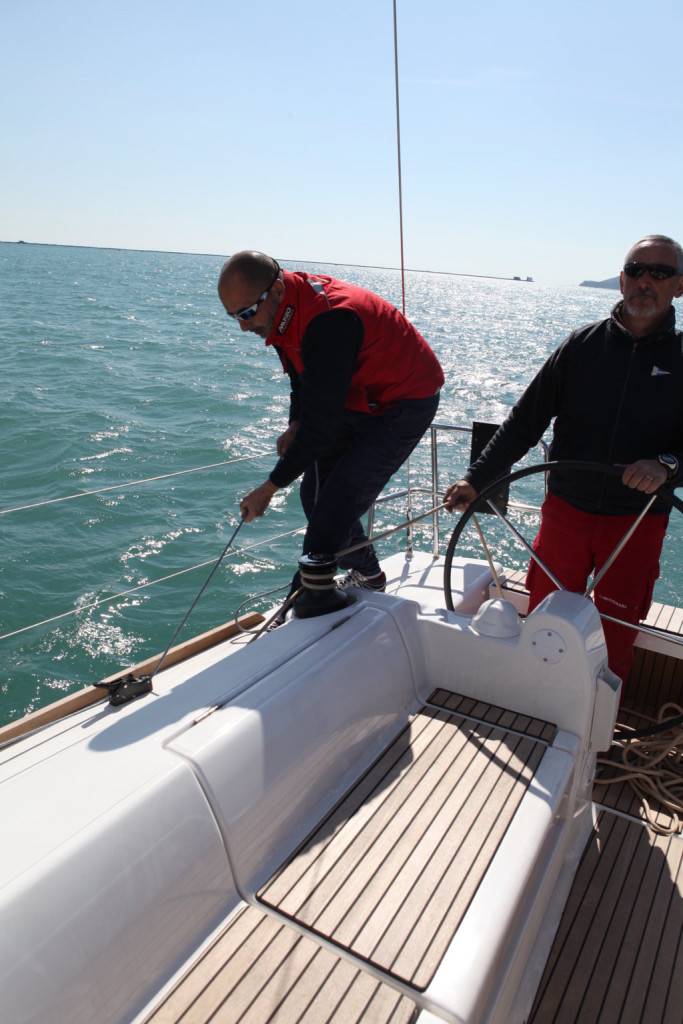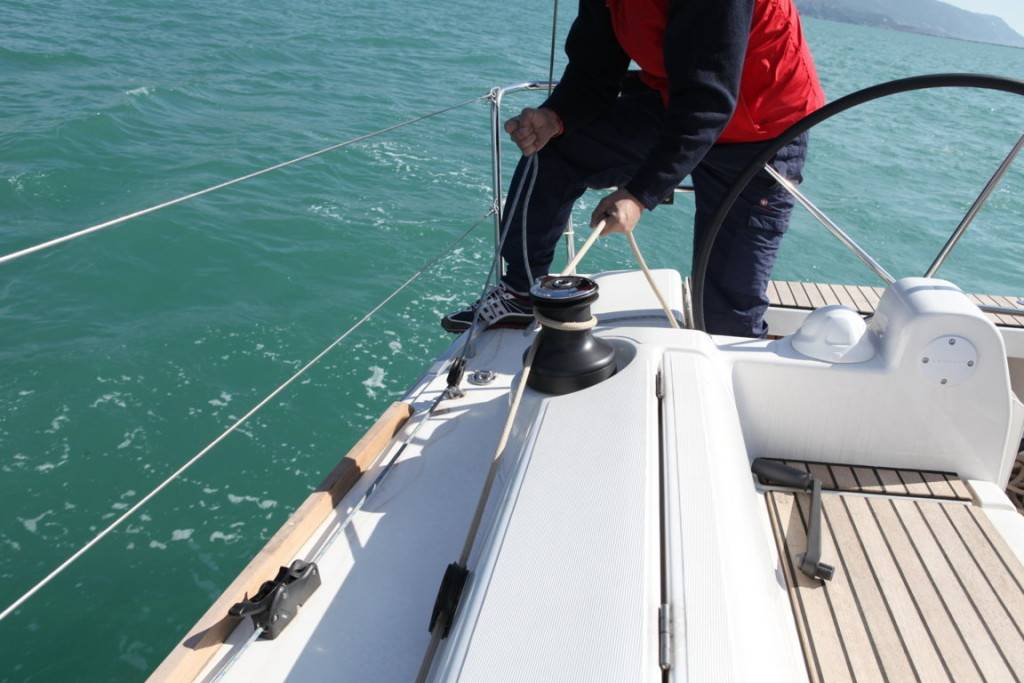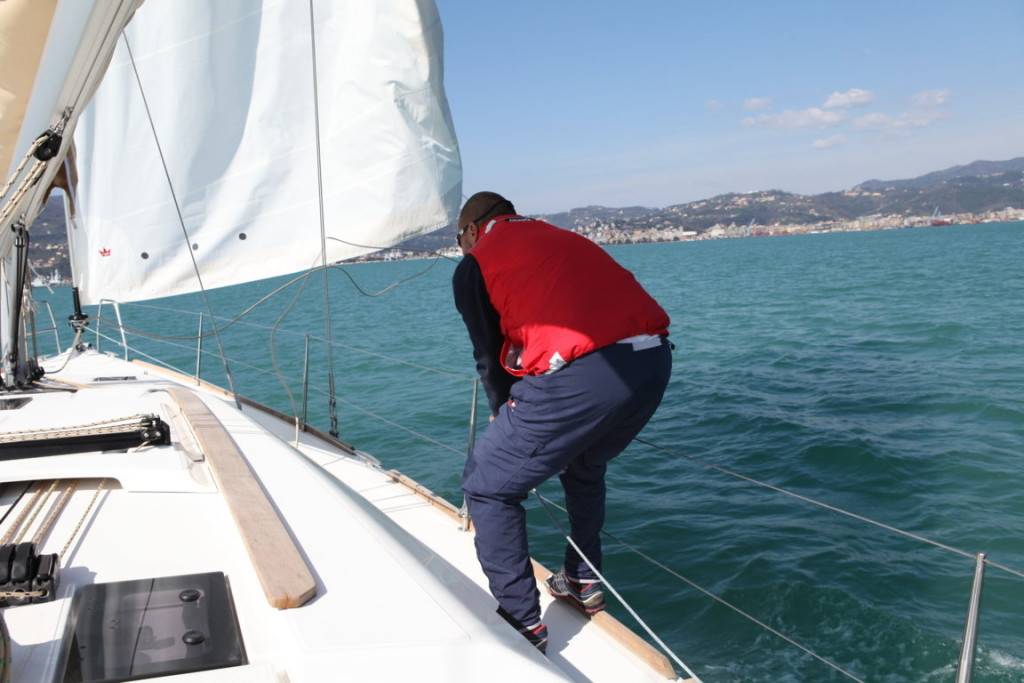Ecco la manovra per avvolgere il fiocco correttamente: non è così scontato come sembra!

Intanto partiamo da un suggerimento che riguarda la sequenza. Se dobbiamo ammainare anche la randa nel modo classico, ossia con la prua al vento, è meglio che la manovra di avvolgimento del fiocco sia eseguita per prima. Questo perché, se andassimo al vento con il fiocco issato, avremmo la sua bugna che sbatte pericolosamente vicina alla persona all’albero.
Inoltre, avere la randa issata ci offre la possibilità di chiudere il fiocco in una andatura diversa da quella classica di bolina più o meno larga, ossia di poppa, con la vela maestra che copre il fiocco sventandolo completamente e consentendoci di avvolgerlo.
Diamo ora inizio alla manovra. Intanto dobbiamo per prima cosa sventare la vela. Non abbiamo bisogno di andare con la prua al vento come abbiamo mostrato qualche giorno fa nel caso di ammainata della randa. Il fiocco non ha stecche che fanno pressione sull’albero ed è molto più semplice togliere pressione. E’ sufficiente prendere una bolina larga, a seconda anche del moto ondoso, e quindi lascare la scotta del fiocco di un buon 30% per far fileggiare la vela di prua.

Prima di agire sulla scottina del rullafiocco dobbiamo verificare che lo stopper sia aperto e, nel caso la manovra sia troppo dura, possiamo allentare un po’ la tensione del paterazzo. Da evitare inoltre di cazzare la scottina nel tratto che esce dallo stopper prima del bozzello perché avrebbe un attrito molto forte lavorando con un angolo diretto sullo strozzatore.
E’ molto probabile che agendo alla fine del circuito della scottina, la manovra sia ugualmente molto dura, soprattutto nelle barche di medie-grandi dimensioni. Si può naturalmente utilizzare un winch, oppure si può cazzare la scottina in posizione più avanzata, verso metà barca, facendo un movimento a bilancino flettendosi però sulle gambe, e non sforzando la schiena, possibilmente con una persona che recupera l’imbando che si crea a poppavia dello stopper.











